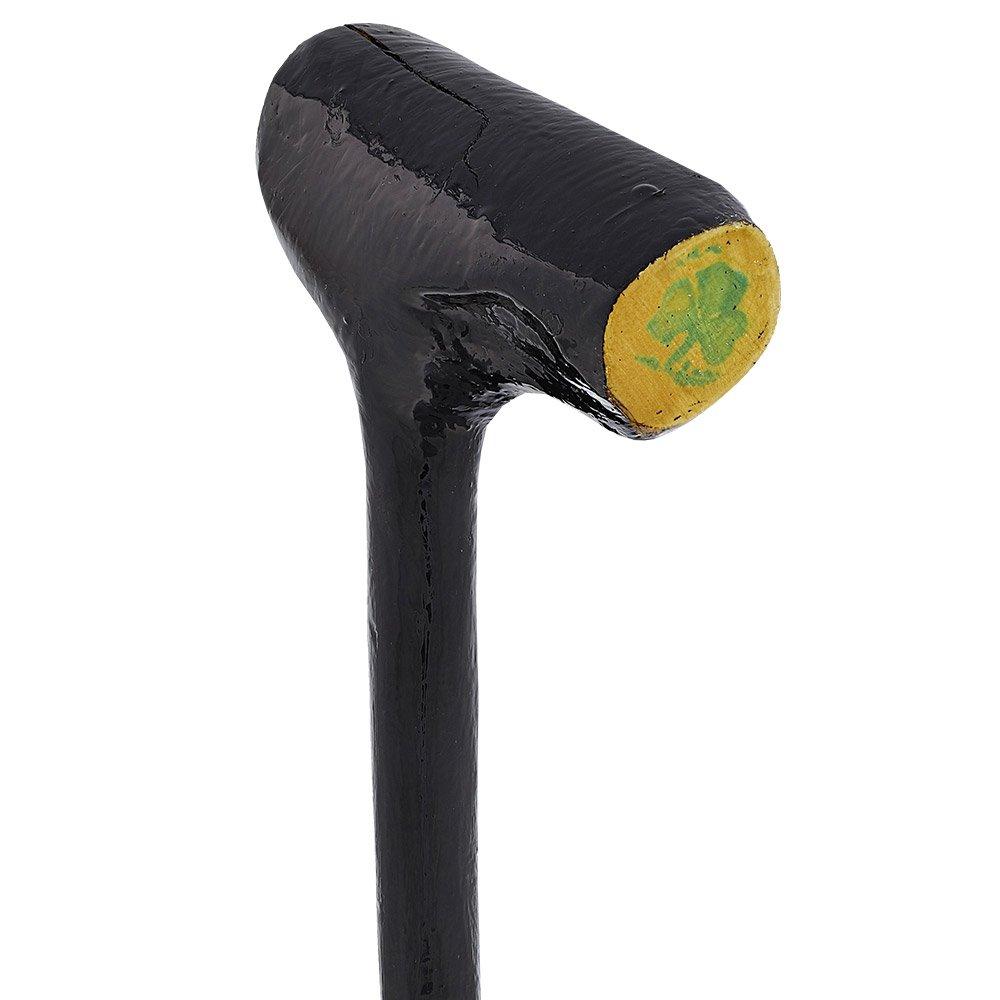

IRISH SHILLELAGH FULL
When the Scots-Irish settled in Appalachia, they had very little trouble locating materials for shillelaghs: The forests of the southern and central Appalachians are full of black, northern red, white, chestnut and scarlet oaks, and several species of hawthorn are common throughout the region, including may, pear, fanleaf, cockspur, and rome, all of which grow in woodland thickets at altitudes up to 8,500 feet. The knobby end can be bored out and filled with molten lead, transforming the shillelagh into a ‘loaded stick.’ To keep the wood from splitting during the drying process and to harden it, sticks were often buried in a manure pile, or smeared with butter and placed in the chimney to cure, which gives them their distinctive black patina. Another states that the first hawthorn bush grew from the staff of St. Joseph’s staff was cut from the same hawthorn tree that produced the Crown of Thorns placed on Jesus’ head at the crucifixion. The blackthorn, in particular, also has longstanding religious connections to staffs. The preferred material for shillelaghs is oak or blackthorn (‘pear hawthorn’ to us) due the density and hardness of those woods. I never saw a bone broken or a dangerous contusion from what was called ‘whacks’ of a shillelagh (which was never too heavy).” Nobody was disfigured thereby, or rendered fit for a doctor. In his 1790 book, ‘Personal Sketches of His Own Times,’ Sir John Barrington wrote that stickfights were exhibitions of skill….”like sword exercises and did not appear savage. Stereotypes of drunken shillelagh-swinging louts have overshadowed the existence of a disciplined martial arts training with the stick. In addition to being used as a weapon to ward off wild animals, muggers, and thieves, shillelaghs could be brought out to settle disputes-a ‘kebbie-lebbie’ to a Scotsman. The Scots called their staff a ‘kebbie’ or ‘kebbie stick.’ And at other periods the shillelagh served well for those who simply could not afford a gentleman’s sword. Other traditional options in Ireland include: holly, hawthorn/whitethorn, hazel, chestnut, apple, and oak.

Blackthorn is the king of woods for traditional Irish shillelaghs, but ash is a close second. But consider another Gaelic term for the staff: ‘bata,’ which means ‘fighting stick.’īoth the Scots and the Irish used them this way, especially during the historical era when neither group was legally allowed weapons for self-defense. The classic shillelagh is a one-piece, knobbed, walking stick made from a single sapling or tree branch, often with the bark still attached. The shillelagh is a wooden cudgel associated with the Shillelagh Forest in County Wicklow, Ireland, famous for its once massive stands of oaks.Īs often seen in depictions of leprechauns, shillelaghs appear to be nothing more than Irish walking sticks, and they certainly are that. Patrick’s Day is only a couple of weeks off, and one of the things you’ll always find plenty of at that celebration is shillelaghs.


 0 kommentar(er)
0 kommentar(er)
